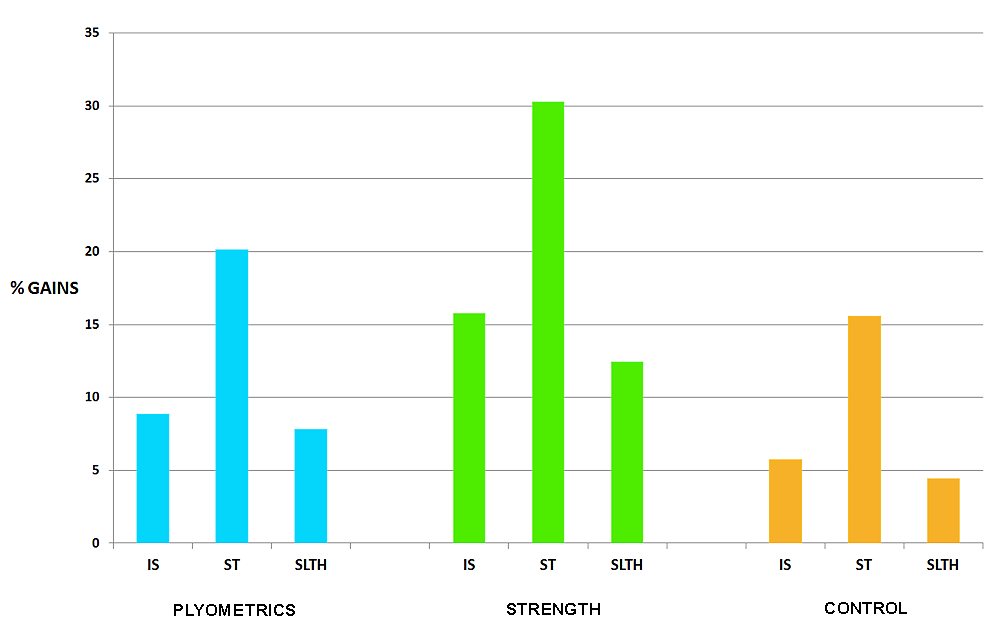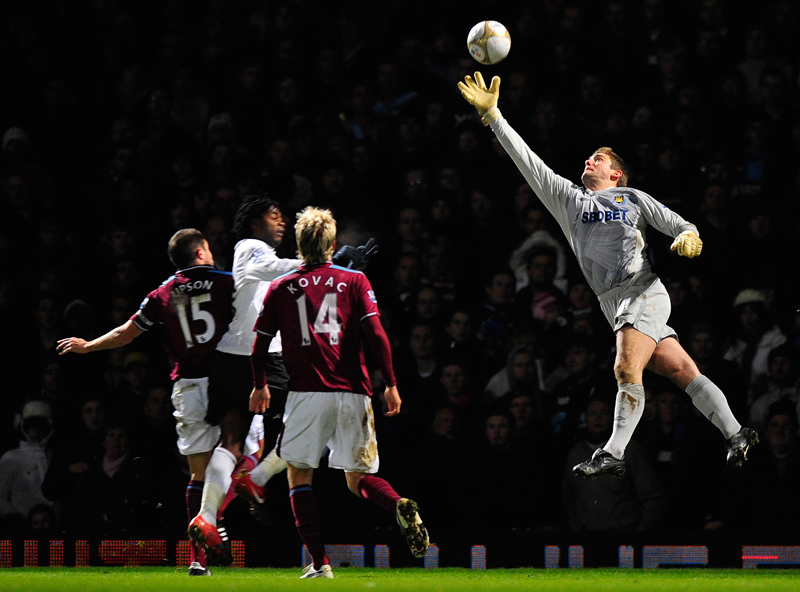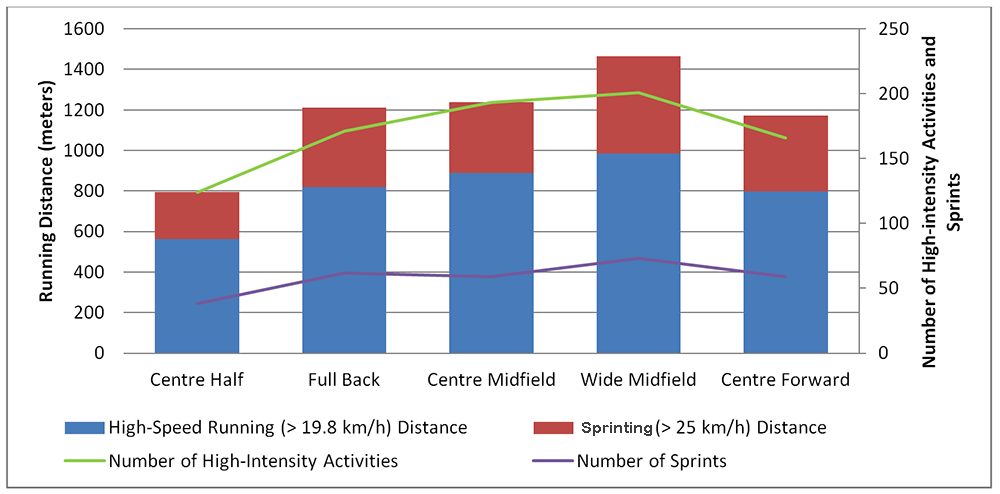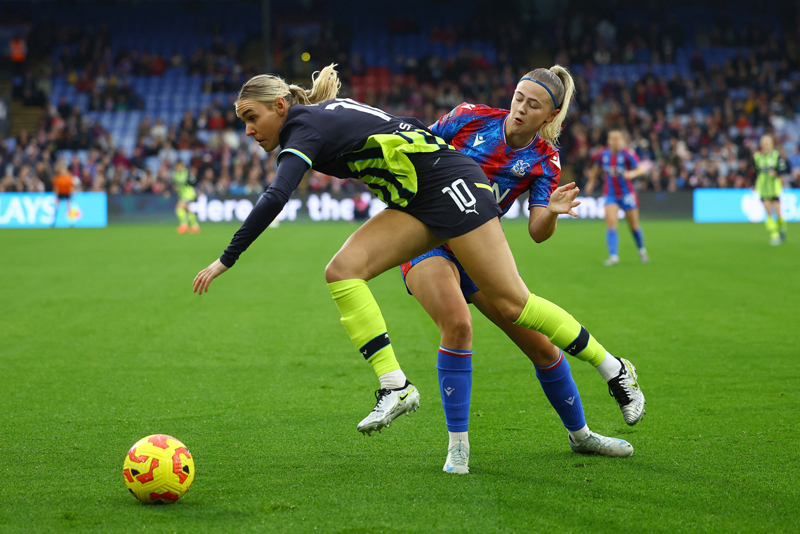You are viewing 1 of your 1 free articles. For unlimited access take a risk-free trial
Plyometrics or weights for soccer performance?
Which is more effective for developing functional strength in soccer players – plyometrics exercises or resistance training? SPB looks at brand new evidence
As any competitive soccer player will tell you, soccer is an extremely physically demanding sport, especially when played at elite level. Through the course of a 90-minute match, players are involved in frequent tackles, jumps, changes of direction, and intense sprinting. What is less appreciated however is the sheer volume of high-speed running and sprinting that soccer players can undertake during a match (see figure 1). In one study on under-17s, data showed that the players sprinted an average distance of 8.45kms during the match, with around half a kilometre covered at speeds of over 19.1kmh (12+mph)(1).
Moreover, while much of the energy expended on the pitch during a game occurs during walking, jogging and slow-speed running, the total distance covered during a soccer game is actually a poor predictor of player performance. Instead, it is the distance covered performing high-intensity running/sprinting/jumping that is a more valid and reliable indicator of a player’s performance capability – even though it constitutes a much smaller proportion of a player’s activity profile. This is backed up by research showing that a) elite players invariably possess the ability to sustain repeated high-intensity sprints and b) the outcome of matches is generally determined as a result of high-intensity sprints leading to goal scoring (or preventing goal scoring)(2).
Figure 1 – High-speed runs and sprints during an English Premiership game (broken down by position)
The total distance covered during a game while performing such variable activities typically ranges from 10 to 12km. High-speed running and sprinting form a much smaller proportion of distance covered; however, players’ performance in these aspects often determines the outcome of games.
Soccer specific conditioning
Data shows that a key factor for winning a sprinting or jumping duel or to get the ball before the rival team player is a combination of power and strength in the lower-limb muscles of players(3). Not only that, players with higher levels of conditioning and muscle strength are less likely to suffer injury(4). When soccer performance really counts therefore, the inclusion of some strength and conditioning training is a no brainer.
One of the most popular methods to increase strength and power in team sport players such as soccer is plyometrics training (PT). Plyometrics uses the principle of a quick-fire action and reaction between two muscular actions – a shortening and a lengthening one. The former is known as a concentric muscular action and the latter an eccentric one.
For example, in the drop/depth jump, which involves jumping from a raised platform onto the ground, upon which a rebound jump is immediately made, the muscles, ligaments and tendons surrounding the ankle, knee and hip joint will undergo a stretch (eccentric action), immediately followed by shortening (concentric action) and a release of energy. For an in-depth discussion of plyometrics training, readers are directed to this article by coach John Shepherd.
Research has established that the various jumping actions performed in plyometrics training (utilizing the stretch–shortening cycle) enhances the muscles’ ability to store and utilize elastic energy more efficiently(5). This in turn leads to a decrease in energy consumption during sports activities involving stretch-shortening movements, most notably in running(6).
How effective is plyometrics for soccer?
Bearing in mind the physical and fitness demands of soccer and the physiological effects of plyometrics training outlined above, it’s perhaps not surprising that there’s a solid body of evidence in favour for the use of plyometrics training by athletes and team sport players. Studies on plyometrics training have found the following benefits:
· Improvements in sprinting and acceleration(7,8).
· Increased power and strength of leg muscles(9).
· Improved agility during change of direction manoeuvres when running(10).
· Enhanced neuromuscular control and biomechanical technique during high-impact tasks like landing and cutting(11,12).
· Improved bone(13) and tendinous adaptation(14) (ie higher bone density and thicker, more resilient and more elastic tendons).
The only real downside of plyometrics training is the fact that those new to this mode of training can suffer delayed onset of muscle soreness (DOMS) caused by repetitive and high-intensity eccentric contractions that occur during the landing phase (where the muscle is being both lengthened and loaded)(15).
The importance of quadriceps strength
Another recommended mode of training and conditioning for soccer players is the use of quadriceps muscle strength training. Research shows that quadriceps (frontal thigh) muscle strength is essential for players’ sporting abilities, such as jumping, sprinting, and running in most teams or individual sports, such as soccer, volleyball, and netball(16). Maximal voluntary contraction of the quadriceps muscle and maximum ball velocity due to kicking are known to be positively correlated (ie stronger quadriceps muscles results in higher ball velocities)(17). In addition, elite soccer players’ maximal squat strength (requiring quadriceps power) is known to be positively correlated to sprinting, and jumping performance(18). In a nutshell, soccer players seem to require strong quadriceps and so strengthening this muscle group should result in improvements in soccer performance.
Since both plyometrics training and conventional strength training (targeted at the quadriceps muscles) are known to enhance factors associated with soccer performance, a natural question to ask is which mode of training is likely to produce the best results? To date, no study has compared the effects of plyometrics vs. strength training of quadriceps muscles on muscle strength, sprint, and lower limb functional performance in soccer players. However, a brand new study which has just been published in the journal ‘Scientific Reports’ has investigated this very question(19).
New research
In this study, Saudi Arabian researchers set out to compare the effects of plyometrics vs. strength training on muscle strength, sprint, and lower limb functional performance in young male soccer players. Ninety players from university and local soccer clubs with a range of playing experience and achievement levels, and with no current or recent injuries were recruited for this study. Following a familiarization period, the players were randomly assigned into one of three groups:
· Plyometrics training group (PTG): Participants in this group performed three exercises; 1) bounding, using long strides and a running-specific action; 2) hurdling using a total of 8 x 40cm cones placed in a straight line, 1 metre apart, while jumping over the cones. The participants had to use both legs to jump over the consecutive cones – ie leading with both the right and left legs; 3) drop jumping, which involved the participants dropping from a 40cm high platform to the floor then immediately rebounding and jumping as high as possible.
· Strength training group (STG): Participants in this group also performed three exercises; 1) isometric knee extension exercises where participants were instructed to contract their quadriceps muscle isometrically with maximum force during a 5-second contraction on a leg extension machine; 2) isometric quadriceps exercises where a towel roll was positioned underneath the participant’s knee, following which they were told to tighten their thigh muscles as much as possible in order to straighten their knees for five seconds; 3) straight leg raises where participants (lying flat) were asked to lift their lower limbs 10 degrees with maximal contraction of quadriceps muscles during 5-second holds.
· Control group: Participants in this group were not given any specific training but were allowed to continue their regular home training, which consisted of a jogging and running warm up followed by 5-6 minutes of stretching exercises only.
The intervention period lasted for eight weeks. Before and after the intervention period, all the participants underwent assessments for the following:
· An isometric strength test on a dynamometer to assess peak quadriceps muscle strength.
· A sprint test over 50 metres.
· A single-leg triple hopping test (to assess maximum distance covered).
After the 8-week training period, the results experienced by the participants in the three groups were compared.
What they found
The results of the intervention showed that there were significant improvements in quadriceps isometric strength, sprint times and single-leg triple hop distance in all three groups. However, as figure 2 shows, the greatest improvements were observed in the strength-trained group, with lesser gains in the plyometrics group and the smallest gains shown in the control group. The finding that the control group made some gains despite doing no strength or plyometrics training might seem odd. However, participants in all three groups were allowed to play their football matches once a week, and this, combined with regular stretching, may explain the slight gains observed (see this recent article for the link between stretching and strength).
Figure 2: quadriceps strength, sprinting and single-leg triple hop gains after eight weeks

Another finding was that the strength gains observed in both the strength group and the plyometrics group were very considerable (20% to 30%). This was most likely due to the fact that prior to the intervention, the soccer players recruited had not been participating in any strength-training regimes, so adding in either strength or plyometrics sessions would have had a relatively large impact compared to players who already had a good background in strength training.
Implications for soccer players and coaches
As we stated earlier, plyometrics training delvers many potential benefits for team sport athletes, including improved sprinting ability, agility and change of direction capacity and overall leg strength. However, for players who are unaccustomed to plyometrics training, there are also some disadvantages, the most important being the repeated eccentric contractions, which can lead to high levels of delayed onset muscle soreness (DOMS), and which may also (due to the more explosive nature of the injuries) aggravate niggling injuries.
What the above study shows is that there is an alternative to plyometrics – namely strength training, which focuses on quadriceps strength. Not only does quadriceps strength training (using exercises such as squats, lunges, leg extensions, leg presses etc) appear to produce comparable or even superior strength, sprint and jumping (hopping) results to plyometrics training, it is less likely to lead to muscle soreness post exercise in players unaccustomed to plyometrics, and therefore be better tolerated by those who are new to soccer conditioning programs.
There are caveats to these conclusions however. Firstly, this study looked at soccer players who, while they played competitively, were not playing at a high/elite level and were not previous strength conditioned. For higher level players with an existing background in strength training, adding in plyometrics may have produced better results than adding these limited strength exercises. Secondly, while strength training is known to increase sprint speed and power, plyometrics training by its very nature is undoubtedly superior for developing agility and ‘quickness’. Since these are important qualities in soccer, coaches should at least consider adding in plyometrics once some basic strength conditioning has been undertaken.
Finally, while quadriceps strength is a key factor for sprint speed and kicking power in soccer, care must be exercised when constructing a strength program for players. Studies have found that there is a higher risk of acute hamstring strain injury in professional football players with significantly lower isokinetic hamstring strength and a lower hamstring-to-quadriceps strength ratio (ie quadriceps strength that is too well develop compared to hamstring strength - see this article)(20). Therefore hamstring strengthening exercises should also be performed along with quadriceps strengthening exercises.
References
1. Int. J. Sports Med. 2010;31(11):818–825
2. Managing high-speed running load in professional soccer players’ SPSR 2019 March (53) volume 1
3. J. Sports Sci. Med. 2012;11(1):170–179
4. J. Strength Cond. Res. 2013;27(3):854–859
5. Sports Med. 2010 Oct 1;40(10):859-95
6. J Strength Cond Res. 2015 May;29(5):1302-9
7. J. Strength Cond. Res. 2003;17(1):60–67
8. Strength Cond. Res. 2016;30(2):368–377
9. Med. Sci. Sports Exerc. 1995;27(12):1655–1665
10. J. Sports Sci. 2008;26(1):97–1076
11. J. Strength Cond. Res. 2006;20(2):345
12. Br. J. Sports Med. 2005;39(12):932–938
13. J. Appl. Physiol. 2006;100(3):839–843
14. Med. Sci. Sports Exerc. 2007;39(10):1801
15. Can. J. Appl. Physiol. 1999;24(3):234–248
16. J. Sports Med. Phys. Fitness. 2004;44:119–125
17. Sci. Football 1988; 429–433
18. Br. J. Sports Med. 2004;38(3):285–288
19. Sci Rep. 2023 Mar 14;13(1):4256. doi: 10.1038/s41598-023-31375-4
20. J. Sci. Med. Sport. 2018;21(8):789–793
Newsletter Sign Up
Testimonials
Dr. Alexandra Fandetti-Robin, Back & Body Chiropractic
Elspeth Cowell MSCh DpodM SRCh HCPC reg
William Hunter, Nuffield Health
Newsletter Sign Up
Coaches Testimonials
Dr. Alexandra Fandetti-Robin, Back & Body Chiropractic
Elspeth Cowell MSCh DpodM SRCh HCPC reg
William Hunter, Nuffield Health
Keep up with latest sports science research and apply it to maximize performance
Today you have the chance to join a group of athletes, and sports coaches/trainers who all have something special in common...
They use the latest research to improve performance for themselves and their clients - both athletes and sports teams - with help from global specialists in the fields of sports science, sports medicine and sports psychology.
They do this by reading Sports Performance Bulletin, an easy-to-digest but serious-minded journal dedicated to high performance sports. SPB offers a wealth of information and insight into the latest research, in an easily-accessible and understood format, along with a wealth of practical recommendations.
*includes 3 coaching manuals
Get Inspired
All the latest techniques and approaches
Sports Performance Bulletin helps dedicated endurance athletes improve their performance. Sense-checking the latest sports science research, and sourcing evidence and case studies to support findings, Sports Performance Bulletin turns proven insights into easily digestible practical advice. Supporting athletes, coaches and professionals who wish to ensure their guidance and programmes are kept right up to date and based on credible science.











